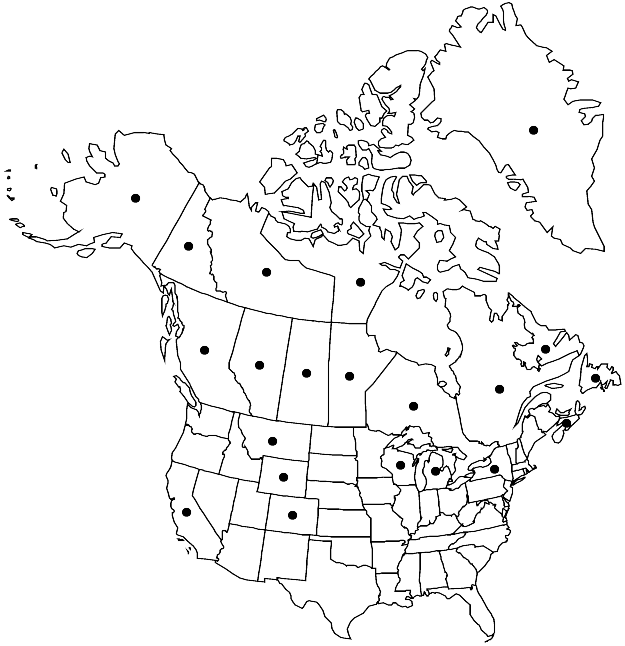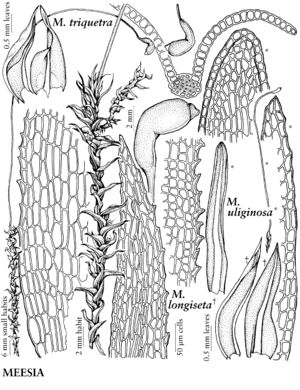Meesia uliginosa
Sp. Musc. Frond., 173. 1801.
Plants 0.1–0.3 cm. Stem leaves erect to flexuose when dry, erect when moist, not 3-ranked, ligulate to narrowly lanceolate, 2–4 mm; base not decurrent; margins revolute basally and to near apex, entire; apex obtuse to rounded (to acute in some arctic populations); costa wide, ending just before apex; inner laminal cells larger, walls thinner than marginal cells. Sexual condition usually dioicous. Seta 1.5–5 cm. Capsule 1.5–4 mm. Spores 40–51 µm.
Habitat: Rich fens, moist calcareous soil banks, soil covered rock crevices
Elevation: low to high elevations
Distribution

Greenland, Alta., B.C., Man., Nfld. and Labr., N.W.T., N.S., Nunavut, Ont., Que., Sask., Yukon, Alaska, Calif., Colo., Mich., Mont., N.Y., Wis., Wyo., n Eurasia.
Discussion
Distinguishing features of Meesia uliginosa include the ligulate leaves and strongly revolute leaf margins. The leaves are erect when dry or moist, and the costa is quite strong. The setae are generally much shorter than those of either M. longiseta or M. triquetra. Although M. uliginosa typically has obtuse leaf apices, some arctic populations have somewhat acute leaf apices; these have typical M. uliginosa costal anatomy.
Selected References
None.
